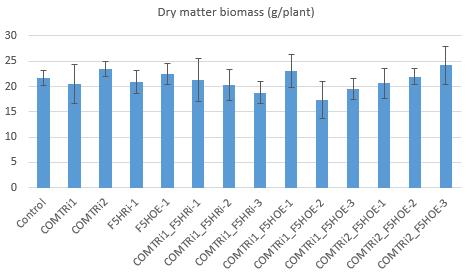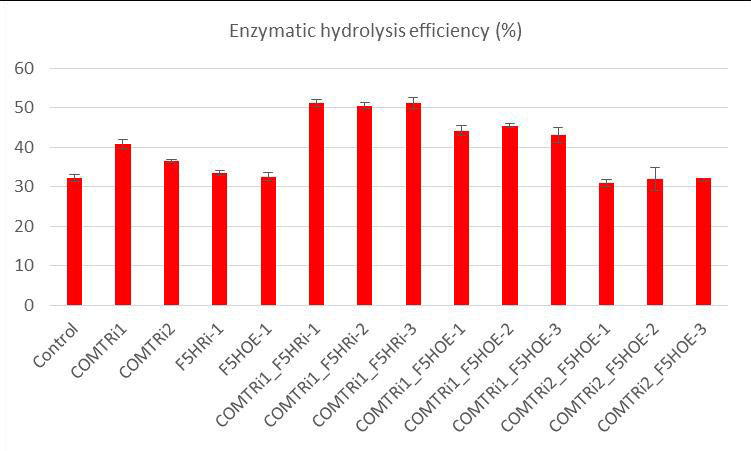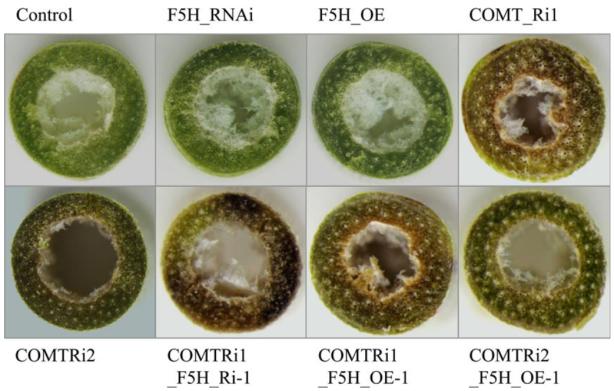Important advances have been made in molecular regulation of lignin synthesis by FIO MNR
Dr. Wang Nengfei of Ecology Center of FIO has made important advances in molecular regulations of lignin synthesis, in cooperation with the team led by Fu Chunxiang of Qingdao Institute of Bioenergy and Bioprocess Technology (QIBEBT) of Chinese Academy of Sciences (CAS). The research results were published online on October 24, 2018, in Plant Biotechnology Journal (IF=6.3), a top journal in the field of botany and bioengineering and applied microorganisms. (Article Link: https://onlinelibrary.wiley.com/doi/10. 1111/pbi.13019)
Dr. Wu Zhengying of QIBEBT, CAS and Dr. Wang Nengfei of FIO are the co-authors of the thesis. Dr. Wang Nengfei of Ecology Center of FIO has long been engaged in the research of cellulose ethanol production by degrading polysaccharide in plant cell wall using cold-active cellulase. Recently, he has been working closely with Fu Chunxiang and his team in establishing the high-efficiency polygenic transformation system of the dual-use crop of biomass energy and forage feed- switchgrass. They implement molecular regulation on two key enzymes controlling the synthesis of syringyl lignin- ferulate 5-hydroxylase (F5H) and caffeic acid O-methyltransferase (COMT). In this way, they found that there is significant synergistic regulatory effect between the genes of the two enzymes before they finally obtain new resources of switchgrass with different structure of lignin, which can be used for the cultivation of fine forage grass and energy grass with high resilience and high-quality cell wall.
Syringyl lignin mainly exists in the cell walls of hardwood and herbaceous plants and is closely related to bioethanol production. Therefore, by controlling the content of syringyl lignin, we can effectively reduce the amount of cellulase and improve the degradation efficiency of cellulose components. The research results not only can help breeders to reasonably cultivate new energy plant varieties with low cost and high cell wall quality through molecular design, but also can be widely used in lodging resistance and the cultivation of forage plants and paper making plants. In addition, it can reduce the cost of cellulose ethanol production in energy plant.
Relevant thesis published and patented technologies:
1. Wu Z, Wang N, Hisano H, Cao Y, Wu F, Liu W, Bao Y, Wang ZY, Fu C (correspondent author). Simultaneous regulation of F5H in COMT-RNAi transgenic switchgrass alters effects of COMT suppression on syringyl lignin biosynthesis. Plant Biotechnol J. 2018 Sep 29. doi: 10.1111/pbi.13019.
2.Nengfei Wang, Jiaye Zang, Kaili Ming, Yu Liu, Zuohao Wu, Hui Ding. Production of cold-adapted cellulase by Verticillium sp. isolated from Antarctic soils. Electronic Journal of Biotechnology. DOI: 10.2225/vol16-issue4-fulltext-12.(2013)
3. Wang Nengfei, et al. A method for preparing bioethanol from suaeda glauca (201210540604.6), China
|






